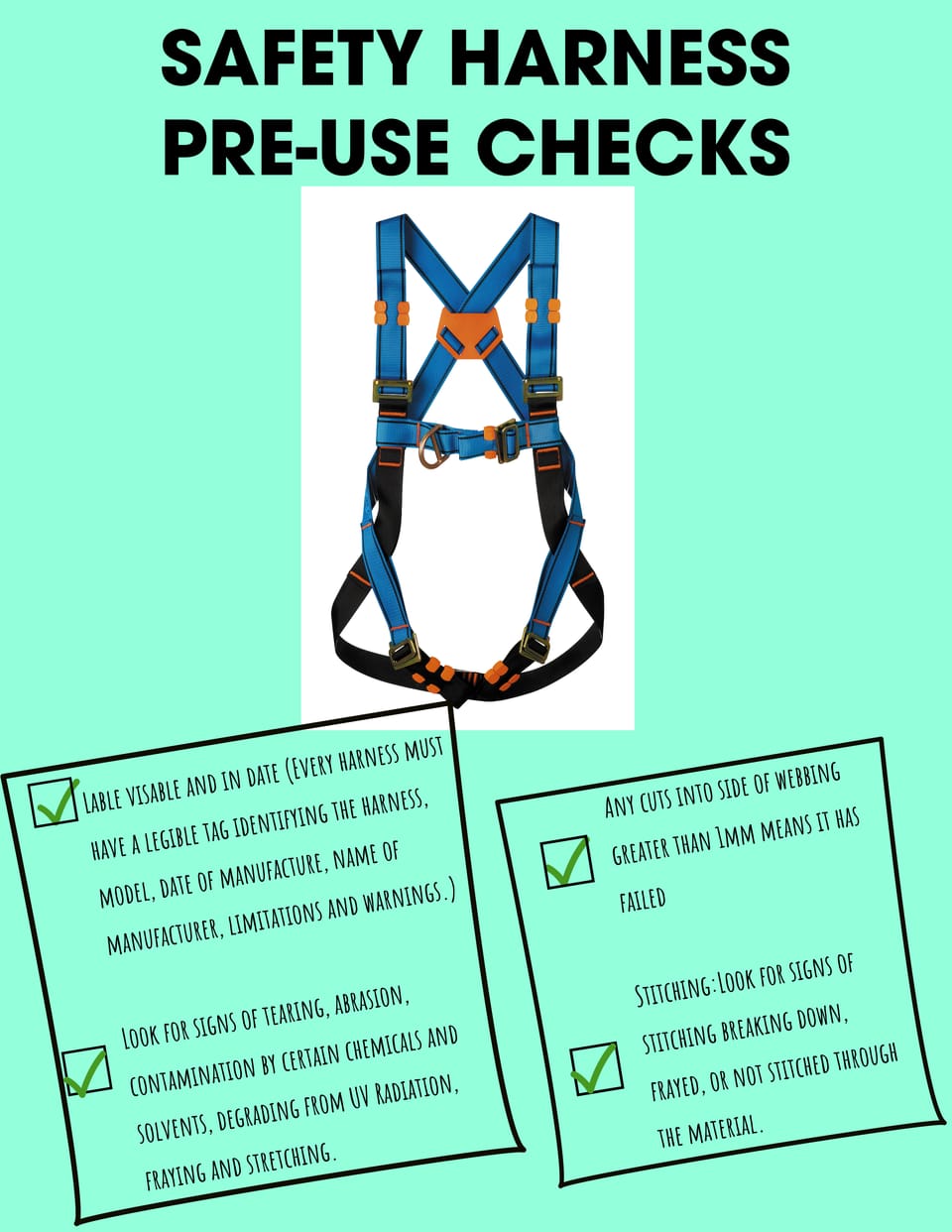Safety Harness Pre-user Checks

Performing pre-user checks on a safety harness is crucial to ensure that it is in proper working condition before engaging in any work at height. Here is a step-by-step guide on how to conduct these checks:
- Visual Inspection:
- Start by visually inspecting the entire safety harness. Look for any signs of wear, cuts, abrasions, or fraying on the straps and webbing.
- Examine all stitching for integrity. Ensure there are no loose threads or signs of unraveling.
- Check metal components such as D-rings, buckles, and connectors for any signs of corrosion, cracks, or distortion.
- Hardware Inspection:
- Inspect all buckles and adjusters to ensure they are functioning properly. Verify that they engage securely and are not damaged.
- Check that all D-rings are free from deformation and securely attached to the harness.
- Ensure that any additional hardware, such as lanyard connectors, is in good condition and functioning correctly.
- Labels and Markings:
- Read and verify all labels and markings on the harness. Ensure they are legible and that the harness complies with relevant safety standards.
- Pay attention to the manufacturing date, inspection dates (if applicable), and any specific instructions provided by the manufacturer.
- Webbing and Straps:
- Inspect the webbing and straps for any signs of chemical damage, UV degradation, or other forms of degradation.
- Check that the straps are not twisted and lie flat against the body.
- Buckles and Adjusters:
- Test all buckles and adjusters by engaging and disengaging them multiple times to ensure they operate smoothly.
- Confirm that adjustments can be made easily and that they hold securely when under tension.
- Fit and Adjustment:
- Ensure the harness is properly sized for the user. Adjust all straps to achieve a snug and comfortable fit.
- Check that leg and shoulder straps are appropriately positioned and tightened to distribute the load evenly in the event of a fall.
- Functionality Check:
- Perform a functional check by attaching the harness to a secure anchor point and applying tension to ensure that all components function as intended.
- Record Keeping:
- Maintain a record of the inspection, noting the date, the person conducting the inspection, and any findings. This documentation can be essential for compliance and tracking the harness's maintenance history.
- Retirement Criteria:
- Be aware of the manufacturer's recommendations for the retirement of the harness. If it has reached the end of its service life or has sustained significant damage, retire it and replace it with a new one.
By consistently following these pre-user checks, you help ensure the safety and reliability of the harness, reducing the risk of accidents while working at height. Regular inspections should be part of a broader safety program, and any concerns or issues identified during inspections should be addressed promptly.